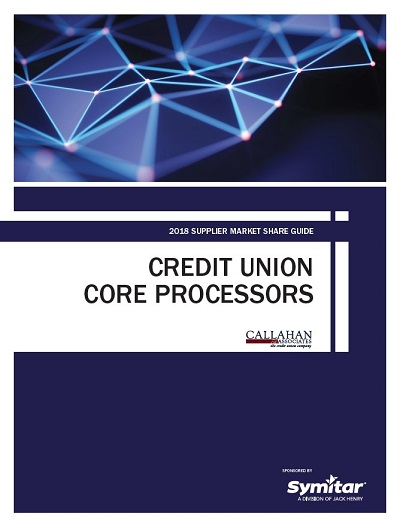Creating a request for proposal for a new core processing system is no small matter. Theres no one right way to do it, but there are lots of better ways.
Suppliers see hundreds of proposals every year. Here, they share the do and do more tips that are sure to get any new relationship off to a great start.
Think Deep
An ideal RFP thoughtfully outlines specific business challenges and why changing core providers is critical for future success. Thats from Robin Kolvek, CEO at EPL, the Birmingham, AL, CUSO that provides core processing to 83 credit unions.
It should have desired deliverables such as pricing and service expectations, culture and value alignment, and any other highly specific needs, Kolvek says. ContentMiddleAd
This all in addition to a comprehensive overview of system requirements, including must have and nice to have functionality and features. However, when writing, keep in mind that a 100-page RFP that asks general questions about services that every provider offers is far less valuable than a 20-page document that outlines specific, desired deliverables that speak to how a credit union wants to do business.
Without a clear understanding of the credit unions business objectives, operational requirements, and how a core provider can meet its needs, the RFP wont yield the right facts to match the right system, the EPL CEO says. Thats bad for the credit union and core processor alike.
Be Specific
Know what problems youre trying to solve, suggests Tony Montgomery, CEO of Utah-based CUProdigy, a CUSO provider of core processing to 22 credit unions. Identify the top five to 10 items per business unit that are must-have requirements for the organization. Include nice-have requirements, too, but avoid duplication as much as possible.
Keep questions focused and specific for better answers. And dont be afraid to throw in examples.
Context helps us answer the question youre really asking, Montgomery adds.
And if theres nonnegotiable functionality, say so and ask questions about how the core would make that situation work. Use the RFP as an opportunity to get that solution.
Shorter Is Better. Thorough Is Best.
The more detailed information, the better, Montgomery says. But, generally, dont include more questions than youre willing to read.
The 2,000-question RFP recently sent to Share One the Memphis, TN, CUSO that currently provides its NewSolutions core to 102 credit unions is a good example of bigger not necessarily being better.
It must have had 100 questions about collections alone, says Don Conrad, senior vice president for sales. Typically, these kinds of RFPs are the result of consultants compiling information from different systems and different credit unions.
David Mitchell, president of 36-client NYMBUS in Miami Beach, FL, says he also sees what he calls canned consultant RFPs from institutions that dont need a lot of the requested information.
The focus should be on how the solution will help the credit union be successful, he says. If you have no plans to use a product or service, dont ask for that information and pricing. Dont include it in the RFP.
Still, Conrad at Share One says his CUSO prefers thoroughness to simple yes-no questions, which dont offer the opportunity to give good answers.
When were asked about failover and backups, we like to give examples and screen shots, the SVP says.
The focus should be on how the solution will help the credit union be successful. If you have no plans to use a product or service, dont include it in the RFP.
Ask The Right Questions
Mary Lou Naso is sales manager at 685-client FedComp in Fairfax, VA. She says a primary reason she hears why credit unions want to leave their current core is because it cant meet their growing needs. To make sure the next one does, she recommends asking these questions:
- How often do you update and upgrade?
- How do you address compliance?
- How long does it take to implement a requested programming change?
- How much do such changes cost?
- Is your help desk available 24/7?
And dont shy away from asking tough questions like: How many clients have you lost in the past two or three years?
Share Ones Conrad points out that mergers cause many losses, but its still worth digging into and taking a hard look at the financial condition of the core provider to which the credit union will be tying its fortunes.
Share The Love
Mitchell at NYMBUS advises forming a committee, with a point person, to prepare the proposal. Make sure the parties involved understand the whole organization and its needs. Additionally, take the opportunity to look toward the future.
Seek online and mobile solutions that can provide an Amazon-like experience, he says. Were seeing fewer and fewer questions about passbook savings.
What kinds questions does he think would provide useful? For starters:
- Do you offer a multi-product suite that can eliminate the need for multiple vendors?
- Do you offer a single sign-on for efficiencies across all product lines?
- Do you maintain middleware or do you offer a flexible API layer?
- How can I control my IT costs? How many IT specialists are we going to need to support your core?
We want everyone to succeed by choosing the right core for their members, the NYMBUS executive says. Ours isnt for everyone.
The 2018 Core Report
Callahan’s Supplier Market Share Guide: Credit Union Core Processors helps leaders fully understand the performance and strengths of core processors in the credit union space. This guide offers:
- Expert opinion and advice.
- Changes in market share.
- Client performance comparisons.
- Aggregate assets for credit union clients.
- Newly acquired clients and integration information for select platforms.
Contact Callahan to order your copy today.


